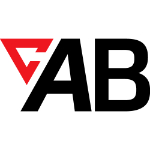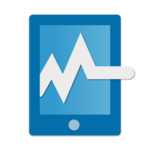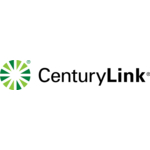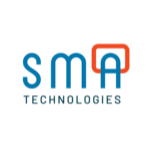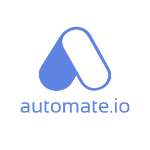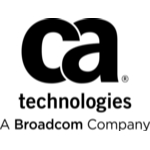TechnologyCounter provides genuine, unbiased real user reviews to help buyers make informed decisions. We may earn a referral fee when you purchase through our links, at no extra cost to you.
List of 15 Best Workload Automation Software
Showing 1 - 15 of 33 productsJams, is a solution for all your jam-making needs! Whether youre a novice in the kitchen or a seasoned pro, Jams offers a wide variety of delicious, homemade jams that are sure to impress. With its user-friendly interface and convenient features, Jam...Read Jams Reviews
ActiveBatch Workload Automation is a solution that simplifies and streamlines complex business processes with ease. With its intuitive interface scheduling capabilities, ActiveBatch helps businesses of all sizes achieve greater efficiency and product...Read ActiveBatch Workload Automation Reviews
Ormuco Stack is a dynamic and innovative software solution designed to enhance your technological capabilities. From cloud computing to data management, Ormuco Stack offers a versatile platform for businesses to optimize their operations and drive gr...Read Ormuco Stack Reviews
NetApp is a leading storage and data management company that has been revolutionizing the IT industry since its establishment in 1992. With a focus on innovation and customer satisfaction, NetApp offers a wide range of solutions for businesses of all...Read NetApp Reviews
BMC Software is a leading provider of innovative IT solutions for businesses of all sizes. With a focus on simplifying and streamlining processes, their software offerings empower companies to optimize their IT environments and drive digital transfor...Read BMC Software Reviews
cPanel, the leading web hosting control panel, offers a user-friendly interface that simplifies website management for businesses and individuals. With its intuitive design and powerful features, cPanel allows users to easily manage files, domains, d...Read cPanel Reviews
VisualCron, the ultimate automation tool for all your task scheduling and execution needs. With its user-friendly interface and powerful features, VisualCron simplifies complex automation processes, saving you time and increasing efficiency. Say good...Read VisualCron Reviews
Pulseway is a remote monitoring and management solution designed to simplify IT management for businesses of all sizes. With its user-friendly interface and real-time notifications, managing systems and networks has never been easier. Stay on top of...Read Pulseway Reviews
CenturyLink is a leading global technology company that offers a wide range of innovative solutions for businesses, homes, and more. From high-speed internet and cloud services to advanced communication and IT solutions, CenturyLink is committed to d...Read CenturyLink Reviews
OpCon is a automation platform designed to optimize business processes and streamline operations. With its user-friendly interface and extensive capabilities, OpCon empowers organizations to increase efficiency, productivity, and reliability. By auto...Read OpCon Reviews
Automate.io is a solution for streamlining your business processes. It simplifies task management and eliminates manual work, allowing you to focus on what really matters - growing your business. With its intuitive interface and seamless integration...Read Automate.io Reviews
AutoSys is a and widely used job scheduling software that helps businesses automate and streamline their IT operations. With its robust features and user-friendly interface, AutoSys enables organizations to efficiently manage and execute complex work...Read AutoSys Reviews
Tidal Automation is a software designed to simplify and streamline your daily tasks. With its advanced features and user-friendly interface, Tidal Automation is a solution for businesses looking to optimize their operations and increase efficiency. L...Read Tidal Automation Reviews
ConnectWise is a business management platform designed specifically for IT service providers. With its intuitive features and customizable modules, ConnectWise empowers companies to streamline their operations, improve efficiency, and ultimately, enh...Read ConnectWise Reviews
Dollar Universe is a and versatile software designed to streamline and automate business processes, leaving you time to focus on other important tasks. With its user-friendly interface features, Dollar Universe provides a seamless solution for managi...Read Dollar Universe Reviews
- What Is Workload Automation Software?
- Top Reasons Why Businesses Need Workload Automation Software?
- What Are the Top Key Features of Workload Automation Software?
- What Are the Top Benefits of Workload Automation Software?
- What Are the Steps to Choose the Right Workload Automation Software?
- What Are the Types of Workload Automation Software for Different Industries?
- What Are the Technology Trends for Best Workload Automation Software?
- What Are the Deployment Options for Workload Automation Software?
What Is Workload Automation Software?
Workload automation software refers to a specific category of software applications that are designed to streamline and automate routine administrative and operational tasks. The software aids in the coordination of several responsibilities inside an organization, including the organizing of work assignments, the oversight of system operations, and the administration of applications.
Workload automation software effectively removes the necessity of manual oversight, scheduling, and monitoring of administrative and operational tasks that are performed manually. The system effectively oversees and regulates various tasks and processes, with the aim of reducing the need for manual intervention and supervision.
The program facilitates the automation and streamlining of intricate and monotonous procedures, such as the extraction and loading of data, execution of backups, generation of reports and forms, and administration of data quality.
Additionally, it provides the user with the capability to schedule recurring or batch operations, carry out tasks according to a predefined timetable, and access work outcomes and logs. In general, workload automation software efficiently eradicates the need for manual labor in routine operations, hence allocating resources towards more significant endeavors.
The utilization of this technology proves highly advantageous for organizations requiring swift and effective processing of substantial volumes of operations, instilling confidence in users regarding the seamless execution of their responsibilities.
Top Reasons Why Businesses Need Workload Automation Software?
1. In order to enhance organizational efficiency and accuracy, it is important to facilitate the automation of processes, both simple and complicated.
2. In order to allocate additional time for staff to concentrate on subjects of greater significance or strategic importance.
3. In order to enhance efficiency and reduce expenses, there is a need to implement automation in routine operations and essential procedures.
4. In order to expeditiously provide comprehensive reports that indicate potential concerns with activities or procedures.
5. In order to promptly offer access to crucial information, such as usage numbers and performance details.
6. In order to expedite and enhance the accuracy of data processing, while mitigating the potential for errors, it is imperative to employ methods that can handle substantial volumes of data in a more efficient manner than human operations.
7. In order to streamline work scheduling and process synchronization across many departments, a simplified approach is necessary.
8. In order to enhance customer service and happiness, it is imperative to expedite the completion of critical tasks.
9. In order to mitigate expenses associated with IT support, it is advantageous to implement workload automation solutions, which possess the desirable qualities of scalability and customization.
10. In order to adhere to essential regulatory obligations and standards pertaining to the security and processing of data.
11. The objective is to enhance the company's performance and expansion by minimizing operating expenses and simultaneously enhancing productivity and customer satisfaction.
12. In order to mitigate the occurrence of time-consuming human errors and faults that have the potential to impede the efficiency of processes, measures should be taken.
13. In order to facilitate prompt and well-informed decision-making, it is imperative to furnish precise and up-to-date information.
14. The objective is to establish a proficient and safeguarded framework for the integration of data across various applications and databases.
15. In order to minimize the necessity of manual intervention and the demand for extra human resources.
What Are the Top Key Features of Workload Automation Software?
1. Scheduling: Workload automation software facilitates the scheduling of tasks and procedures to execute at precise timings, eliminating the need for manual involvement.
2. Resource Optimization: The program has the capability to efficiently allocate resources, hence enhancing resource utilization and diminishing resource expenses.
3. Event-driven Processing: The workload automation platform have the capability to initiate jobs and processes in response to predetermined events, such as the successful completion of a preceding job or the arrival of a new file.
4. Parallel Processing: The software has the capability to execute numerous tasks and operations concurrently, resulting in decreased processing duration and enhanced efficiency.
5. Monitoring and Reporting: Workload automation solutions provide the capability to monitor the execution and performance of jobs, as well as generate reports for the purpose of tracking and analysis.
6. Data Security and Integrity: The utilization of workload automation software facilitates the effective management and safeguarding of sensitive data, hence guaranteeing the preservation of data security and integrity.
7. Compression Techniques: The workload automation platform has the capability to employ compression techniques in order to decrease the sizes of data, leading to expedited data processing.
8. System Integration: The program possesses the capability to facilitate the integration of dissimilar systems, hence facilitating the seamless exchange of data and resources.
9. Autonomic Computing: The utilization of autonomic computing capabilities allows for the automation of workload software, enabling it to adapt automatically to dynamic changes in workloads and environments.
10. Advanced Overload Protection: The software possesses the capability to identify and address instances of system overloads, hence mitigating the occurrence of outages and system breakdowns.
What Are the Top Benefits of Workload Automation Software?
The top benefits of workload automation software are:
1. Increased Efficiency - Workload automation tools are specifically developed to automate operations that are either repetitive or complicated in nature, hence facilitating the accurate and efficient completion of such processes.
This has the potential to decrease the time allocated for workers to engage in routine chores, so enabling them to allocate their time and efforts towards more significant responsibilities.
2. Improved Productivity - The best workload automation software plays a crucial role in enhancing organizational efficiency by automating laborious and time-consuming processes. This enables personnel to allocate their attention towards jobs of greater significance that need higher levels of expertise and exertion.
3. Reduced Risk of Error - Human error can result in blunders and miscommunications when relying on manual efforts. Automation software completely eliminates this risk and effectively ensures operations are performed with a high level of accuracy and consistency on every occasion.
4. Cost Savings - The implementation of automated systems to replace labor-intensive manual operations and mitigate the risk management of human errors can yield substantial financial benefits for enterprises.
5. Compliance/Regulatory Adherence - The best workload automation tools plays a crucial role in ensuring regulatory compliance and adherence to business standards and best practices.
6. 24/7 Availability - The workload automation platform enables the continuous operation of processes, thereby ensuring the timely execution of duties, even in the absence of employees.
What Are the Steps to Choose the Right Workload Automation Software?
1. Analyze your current requirements: Begin by evaluating your existing workload automation requirements in order to ascertain the specific tasks that necessitate automation and the level of complexity associated with these jobs.
2. Determine your budget and capabilities: Determine the financial allocation for task automation software and assess the desired level of functionality needed.
3. Evaluate the features and capabilities of potential software solutions: In order to identify the best workload automation software solutions, it is important to do a comparative analysis. One should take into consideration the level of seamless integration that the technology and systems offer.
4. Test and evaluate potential solutions: Conduct tests on prospective solutions and assess their efficacy and user satisfaction.
5. Make an informed decision and implement the solution: Ultimately, it is imperative to thoroughly examine the outcomes and engage in a comprehensive evaluation in order to arrive at a well-informed and reasoned conclusion.
Based on the chosen best workload automation tools, formulate a comprehensive strategy for the implementation and long-term sustenance of the solution.
What Are the Types of Workload Automation Software for Different Industries?
The best workload automation software is a technological solution that aids enterprises in effectively overseeing, arranging, and enhancing the progression of tasks across various platforms and applications. Various industries necessitate distinct sorts of the best workload automation tools, contingent upon their specific requirements.
The most common types of workload automation software are:
1. Business Process Automation – This particular program facilitates the automation and administration of intricate business procedures, including but not limited to invoicing, expense tracking, and compliance documentation.
2. Enterprise Resource Planning (ERP) Software – The workload automation platform facilitates the management of essential business procedures, including accounting, order management, and inventory management.
3. Application Service Providers (ASPs) – This particular software facilitates the provision of programs on a per-request basis and is frequently employed by organizations with a substantial population of geographically dispersed consumers.
4. Cloud Workload Automation – This particular software is employed for the purpose of effectively overseeing data analytics and intelligence collection through the utilization of cloud-based resources and services.
5. IT Automation – The workload automation platform facilitates the streamlining and optimization of IT operations, encompassing asset management, backup and recovery, and network maintenance.
What Are the Technology Trends for Best Workload Automation Software?
The prevailing inclination in the realm of the best workload automation software is that it ought to possess the capability to seamlessly interface with several essential systems, including Human Resources, Customer Relationship Management (CRM), Enterprise Resource Planning (ERP), Supply Chain Management (SCM), as well as collaboration and knowledge management platforms.
The capability of workload automation systems to effectively distribute automation tasks across different systems and autonomously handle their scheduling and triggering processes with minimal user involvement is crucial.
Moreover, an optimal workload automation program should possess the capability to monitor, examine, and document all automated operations, while still facilitating human user involvement as necessary.
Additionally, it is imperative that the best workload automation tools incorporate functionalities for immediate notification in order to promptly detect and address issues prior to their detrimental effects on operational efficiency or the occurrence of service interruptions.
Ultimately, an optimal workload automation software solution should offer a comprehensive and cohesive experience, facilitating efficient accessibility and management of workflows for IT personnel.
What Are the Deployment Options for Workload Automation Software?
Workload automation software provides a diverse range of deployment alternatives. The available options for deployment encompass on-premises installation, remote installations, cloud deployment, or a combination of both.
1. The on-premises installation refers to a conventional approach to deploying the best workload automation tools, wherein the software is placed directly on the premises of the customers.
2. In the context of remote installations, the management of task automation software is entrusted to professional services workers who operate from a separate location. Customers are granted access to this software through a secure network connection.
3. Cloud deployment refers to the provision of task automation software to customers via the internet, enabling them to access and utilize the software remotely.
4. The hybrid strategy entails the integration of both on-premises and remote components, wherein the workload automation software is deployed on customers' premises alongside internet-accessible resources.

